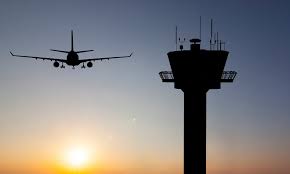
The State Tax Service will operate as a single legal entity from January 1, 2021.
“From January 1, 2021, the territorial bodies of the State Tax Service, created as its separate divisions, begin to exercise the powers and functions of the territorial bodies of the State Tax Office, which are liquidated as a legal entity,” the service said on its website on Thursday.
The corresponding order was signed by head of the department Oleksiy Liubchenko on Thursday.
According to him, this is the final step in the transition of the service to the format of a single legal entity.
Thus, from January 1, the service will consist of the central office and territorial bodies as separate units, the department added.

At the Wednesday meeting, the Cabinet of Ministers of Ukraine expanded the list of goods needed to combat coronavirus (COVID-19), the import and delivery of which to the customs territory are exempt from VAT, test systems and laboratory equipment.
According to the text of the decree, this is about test systems for ELISA testing and antigen testing.
In addition, the government has approved a decree that will simplify the procurement of medicines for the treatment of patients with COVID-19. In particular, the requirements of Cabinet of Ministers decree No.333 some issues of state regulation of prices for medicines and medical products will not apply to the purchase of medicines for the treatment of patients with COVID-19, which will increase the access of medical facilities to medicines.

The Verkhovna Rada has ratified the protocol with amendments to the convention with Austria for avoidance of double taxation and prevention of tax evasion with respect to taxes on income and property.
The Ministry of Finance said on its website the protocol provides for an increase in the general tax rate of dividends from 10% to 15% and interest from 2% to 5%.
“Increased were also the rates of royalties paid for the use of any copyright on scientific work, patent, etc. from 0% to 5%, for the use of copyright on literary works or works of art from 5% to 10%,” the Ministry of Finance said.
In addition to the increase in rates, it is envisaged to supplement the convention with new articles on limiting the possibility of applying the preferential provisions of the convention, if the main purpose is to obtain such benefits, and on expanding the ability of the competent authorities of Austria and Ukraine to exchange tax information.
“These changes and rates correspond to the general practice of Ukraine’s conclusion of such agreements and protocols to them with other countries of the world – similar rates are contained in most of the conventions and protocols to them, concluded by our state,” the ministry explained.

Ukrainian agricultural producers as of December 7 had sowed main winter crops on an area of 8.06 million hectares (98% of the forecast of 8.2 million hectares), while 79,300 hectares were sown in a week.
According to a report on the website of the Ministry for Development of Economy, Trade and Agriculture, in particular the area under wheat was 6.1 million hectares (100% of the forecast), barley – 954,700 hectares (101%), rye – 125,200 hectares (94%), and rapeseeds – 881,100 hectares (87%).
According to the State Statistics Service, the area sown with winter crops for the harvest in 2020 amounted to 8.9 million hectares, which is 0.2% more than the area for the harvest in 2019.
Winter wheat was sown on 6.4 million hectares (0.6% less than for the 2019 harvest), winter barley – one million hectares (3.9% more), rye – 135,000 hectares (16.7% more) and rapeseeds – 1.3 million hectares (0.3% more).

Traffic in the airspace of Ukraine in November fell by 56.7% compared to November last year, the press service of the Ukrainian State Air Traffic Services Enterprise (UkSATSE) has reported.
In general, UkSATSE serviced 9,910 flights last month, of which 1,909 were domestic (a decrease of 15.6% from November 2019), 4,563 international (less by 62%) and 3,438 transit (down by 60%).
Ukrainian airlines performed 3,578 flights (53.4% less than in November a year earlier), foreign airlines 6,332 flights (58.3% less).
“The next year in the aviation segment is seen through the prism of a certified vaccine, new rules for transportation for passengers and a new economic reality for airlines. The rebirth of the industry will depend on macroeconomic factors, adjusted for aviation narrow-profile features. In positive circumstances, the recovery of the aviation market could occur much earlier than predicted. This is especially true for Ukraine,” Head of UkSATSE Andriy Yarmak said.
According to the agency, the dynamics of the number of flights in the airspace of Ukraine in 2020 remains low: June – 4,584 flights, July – 12,195, August – 16,690, September – 14,959, October – 13,041 flights.
However, UkSATSE notes that the situation with traffic in the sky may begin to change in the near future.

The first direct flight Kyiv – Skopje departed took off on Sunday, now Ukraine and North Macedonia are connected by regular flights, Ukrainian Foreign Minister Dmytro Kuleba said.
“We are further expanding the freedom of travel for Ukrainians. Ukraine and North Macedonia signed a visa-free regime last year. And today, for the first time in history, a direct flight Kyiv – Skopje has taken off. From now on, our countries are connected by regular flights. This is the development of not only tourism, but also business contacts,” wrote Kuleba on Twitter on Sunday.